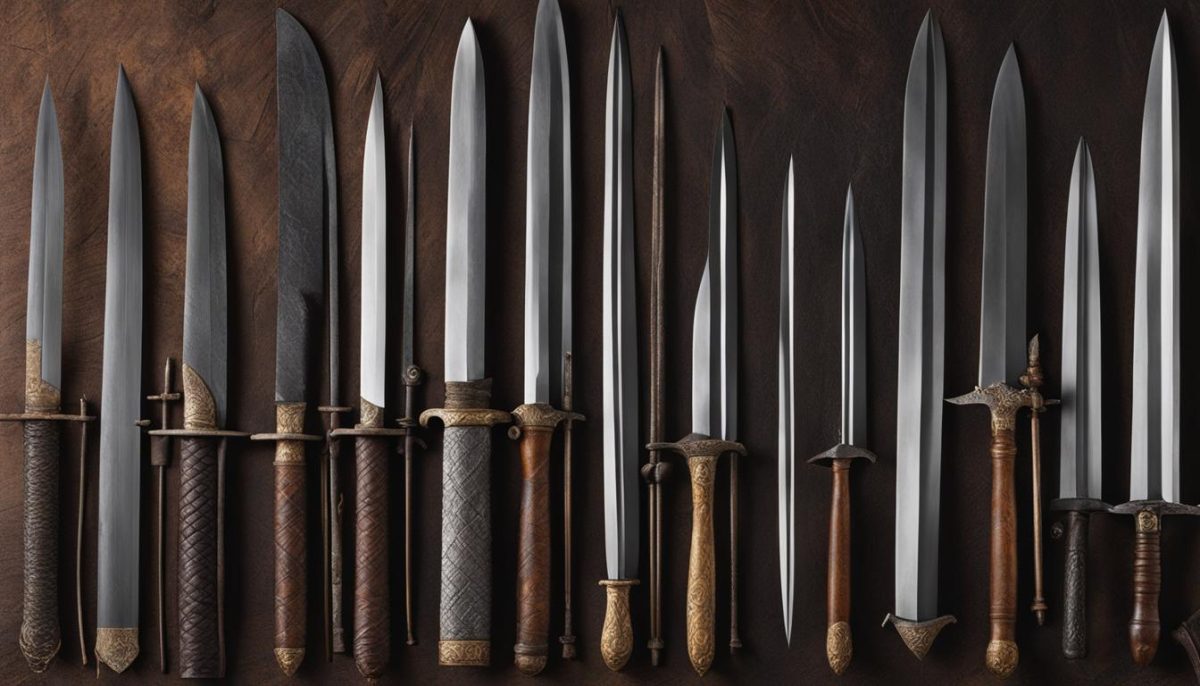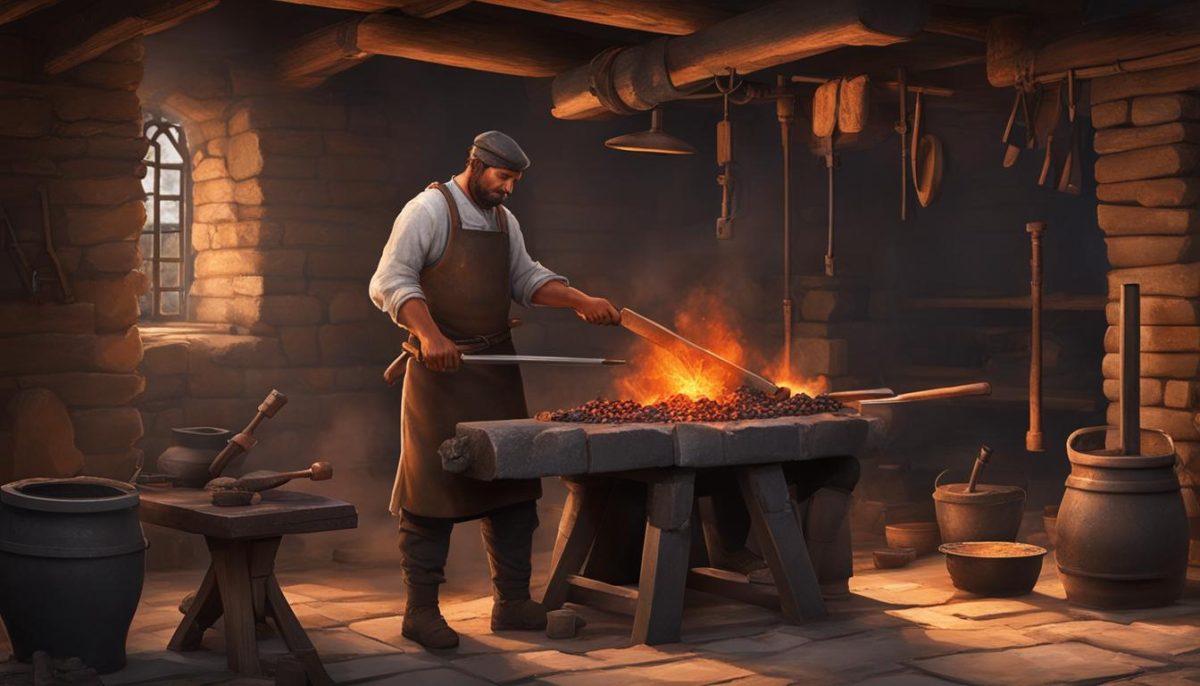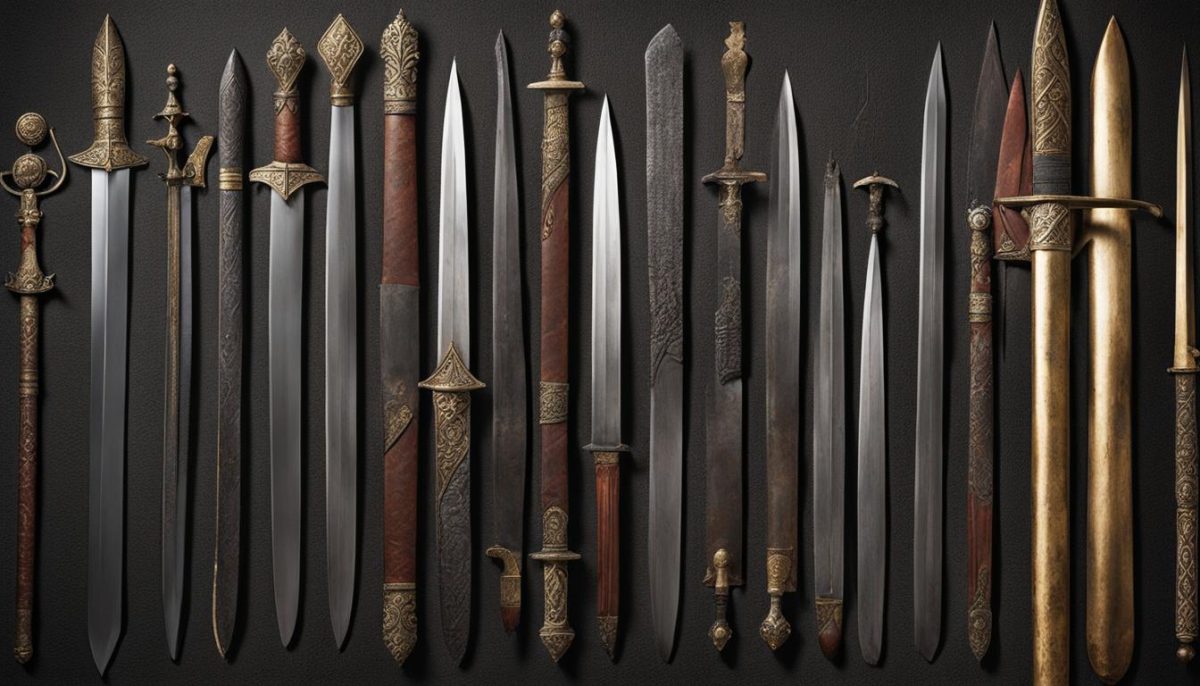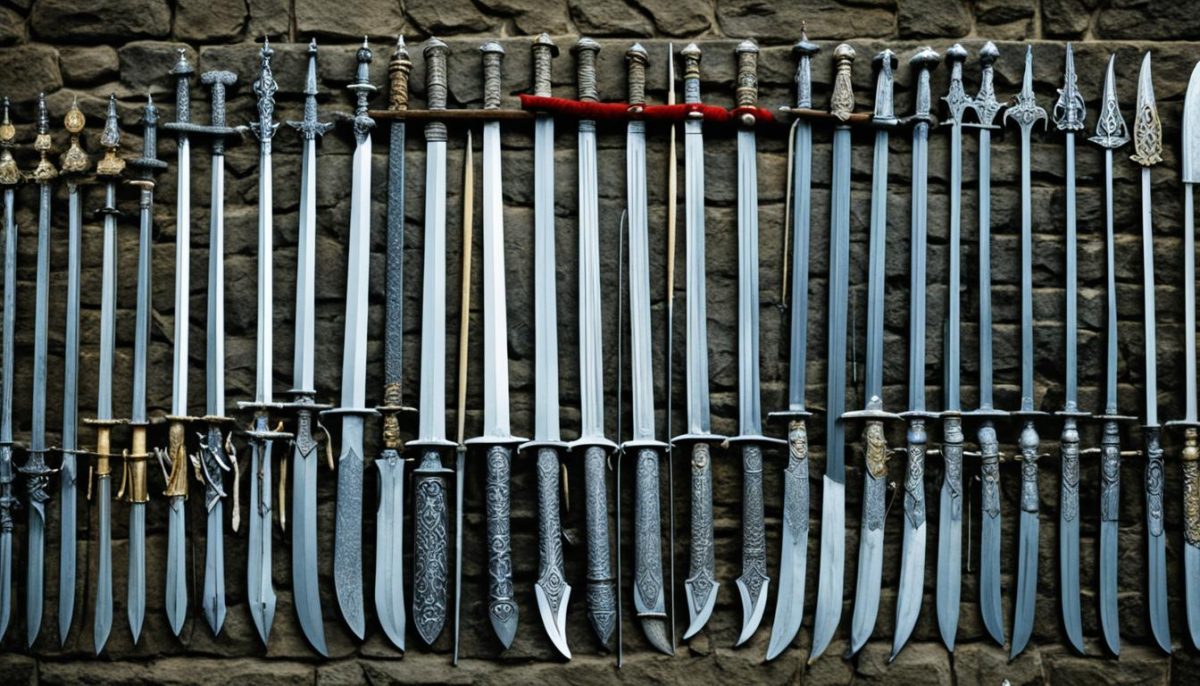The quest to uncover the storied past of medieval swords brings to light the robust and meticulous craft of medieval steelmaking. These icons of valor, which have captivated the imagination of historians and enthusiasts alike, stand as enduring testaments to the artistry and skill of ancient blacksmiths. In this exploration, we delve deep into the very essence of these legendary weapons, examining the sword steel composition that rendered them both formidable in battle and exquisite in craftsmanship.
To truly appreciate the caliber of historical steel swords, one must embark on a journey back in time, where the clangor of the forge harmonized with the ambition of swordsmiths to transform crude iron into magnificent steel. The chronicles of history reveal the nuances and advancements that defined centuries of blade evolution. As we sharpen our knowledge about the materials that shaped an era, we forge a connection to the past that is as indelible as the swords themselves.
Stay with us as we cut through the veils of history to reveal the metallurgical mysteries and the fiery processes that yielded the steel of legend, which would lay the groundwork for legends written with the sword, by the sword.
The Evolution of Steel in Medieval Swordmaking
The medieval era was marked by significant advancements in the art of swordmaking. The journey from basic iron to high-quality steel blades represents a period of remarkable ingenuity and technological progress. This transformation was driven by the demands of warfare and the prestige associated with wielding superior weaponry. In this section, we unravel the stages of this evolution, spotlighting key developments that led to the superior medieval swords revered today.

The Dawn of Steel: From Iron to Steel Swords
Initially, swordsmiths worked primarily with iron to forge their blades. The leap from iron to steel represented a quantum leap forward in terms of durability and sharpness. The iron to steel transition was made possible through the enhancement of smithing techniques, which allowed for better carbon infusion, culminating in a stronger material. This evolution of swordmaking began to produce weapons that were not only more lethal but also more resilient on the battlefield.
Crucible Steel: The Secret of the Ulfberht
The Viking Ulfberht swords remain a testament to the zenith of early medieval metallurgy. These swords boasted crucible steel, which was made by melting iron with carbon-rich materials in a closed vessel, enabling the creation of a remarkably pure and homogenous steel. The process was far ahead of its time, giving rise to blades that could withstand tremendous stress while maintaining a sharp edge.
Pattern Welding: Artistry and Strength
Pattern welding was another leap forward in historical blade forging. By layering different types of iron and steel, smiths created blades with beautiful, intricate patterns as well as superior strength. This technique not only exemplified the evolving artistic expression in swordmaking but also contributed greatly to a sword’s structural integrity, allowing it better to withstand the rigors of combat.
Throughout the chronicles of medieval warfare, the evolution of swordmaking is evident in the progression from simple iron tips to magnificent steel blades—each stage reflecting the ceaseless pursuit for excellence in the age-old art of forging legendary swords.
Steel Medieval Swords: Analyzing the Metal of Legend
In the enigmatic world of medieval combat, the sword stood as a symbol of power and prestige. Intriguing as the tales may be, modern metallurgical studies have turned towards steel composition analysis to unravel the factual backbone of these legendary swords. Employing sophisticated techniques such as x-ray fluorescence and microhardness testing, researchers have unearthed critical insights into the historical steel quality and craftsmanship that equipped warriors of yore.
- Understanding the microstructure of medieval steel provides a window into the intricate balance of hardness and flexibility essential for surviving the brutal requirements of medieval battle weapons.
- Chemical composition analysis reveals the specific elements and impurities present in the steel, delineating how they contributed to the blade’s overall performance.
- Analyzing the wear and corrosion patterns allows historians to infer about the use in combat or ceremonial display, further demystifying the life cycle of these renowned arms.
Historic blades such as the Ulfberht, which boasted an advanced steel composition for its time, captivate us with their magic. Examining them under the lens of modern science exposes their true magic: a mastery of metal that defined an era.
“These swords were not just weapons but sophisticated technological artifacts that encapsulated the prowess of their wielders and the capabilities of their creators.”
Adeptly wielding the tools of scientific enquiry, material scientists and historians alike strive to decode the latent knowledge preserved in rust and remnants, fostering a profound appreciation for these ancient marvels.
Geographical Influence on Medieval Sword Steel
The craft of swordmaking in the Middle Ages was an art form shaped significantly by cultural exchange and geographic nuance. European swordsmithing was renowned for its steadfast methods and the integrity of the swords produced, yet it continually evolved through influences that stemmed beyond its borders. The techniques developed within different regions, propelled by medieval trade routes, led to not just the circulation of goods, but the dissemination of knowledge that molded the steelmaking traditions across continents. It is this global steelmaking influence that brought about distinct steel quality variations in the blades of yore, each echoing the lands from whence they came.
European Swordsmith Techniques
In European forges, the art of swordsmithing thrived, characterized by rigorous processes of heating, hammering, and quenching that produced resilient and capable weapons. Deep within monastic archives and royal armories, the tales of these swords were often found entwined with the valor of those who bore them. Swordsmiths in regions like Toledo and Solingen became legendary, their names synonymous with the unyielding quality and superior craftsmanship of their blades.
The Eastern Influence: Damascus and Beyond
Meanwhile, the East was crafting a legend of its own—the mystique of Damascus steel. Renowned for its distinctive patterns and reputed to hold a sharpness unrivaled by its contemporaries, Damascus steel was a sought-after commodity in the medieval world. Eastern sword techniques, involving the meticulous forging of wootz steel, cultivated a reputation that eventually traveled West, profoundly impacting the methods of European artisans seeking to replicate the exceptional durability and beauty of these Eastern blades.
Steel Trade Routes and Their Impact on Swordmaking
The spine of this craft’s evolution was the network of medieval trade routes that threaded through empires and civilizations. These pathways did more than usher spices and silks from one land to another; they were the conduits through which ideas flowed. The exchange of steelmaking techniques and materials via these routes catalyzed advancements in sword production and steel quality, making the medieval period a crucible for the melding of global steelmaking influence. Artifacts and manuscripts bear witness to this cross-cultural exchange, highlighting how our ancestors wove together a tapestry of innovation that would define the legendary armaments of the medieval era.


